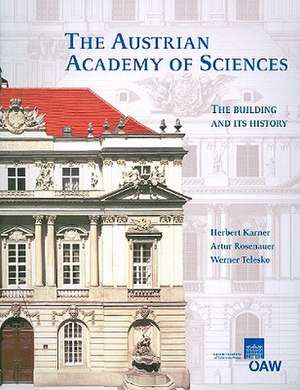The Austrian Academy of Sciences. the Building and Its History
en Limba Engleză Paperback
Preț: 108.29 lei
Nou
Puncte Express: 162
Preț estimativ în valută:
20.72€ • 22.58$ • 17.46£
20.72€ • 22.58$ • 17.46£
Indisponibil temporar
Doresc să fiu notificat când acest titlu va fi disponibil:
Se trimite...
Preluare comenzi: 021 569.72.76
